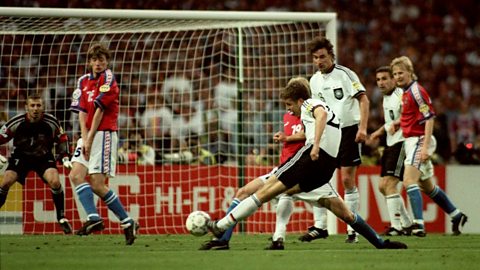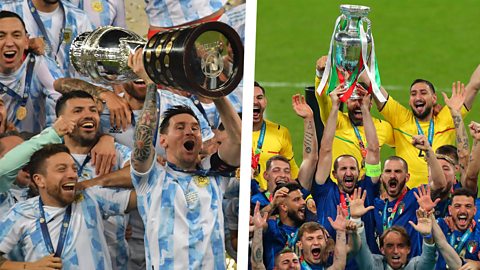This summer will see the football world unite once more for Euro 2024.
The tournament is set to bring together 24 nations, across 10 host cities, for a fabulous football extravaganza. While the world of football continues to take strides to ensure the beautiful game can be enjoyed by everyone, this was not always the case т as has been highlighted by a brand new exhibition in Berlinтs Olympiastadion Sports Museum.
Julian Rieck is project manager at What Matters, the organisation behind the exhibition and he told ТщЖЙЙйЭјЪзвГШыПк Bitesize a little more about it.
What is the exhibition?
The exhibition т named тSport. Crowds. Power.т т focuses on football during the Nazi dictatorship of Germany, which lasted from 1933 to 1945, but as Julian was keen to stress, the exhibitionтs focus does not stop at 1945. The exhibition also shows what he described as: "the continuities in the personal, but also in the ideology, of this 12-year Nazi time that shaped Germany.т
What are some features of the exhibition?
One focus of the exhibition, which Julian described as his favourite, is a collection of football shirts from teams that were forbidden or exiled during the Nazi dictatorship. One such club, Bar Kochba Frankfurt, was home to more than 1,000 members at one point т before the Nazis dissolved all Jewish organisations and clubs in 1938.
Julian said the collection: тgives a connection to today and that people are still today excluded,т highlighting a key theme of the exhibition in that discrimination and exclusion are not merely things of the past.
Julian made a point of saying that stadiums are not necessarily safe spaces for minorities or oppressed groups, citing the lingering presence of racism, homophobia, sexism, antisemitism and ableism in modern football.
One example he gives of a safe space is the Pride House Berlin - specially set up for queer fans to watch Euro games, away from the stadiums where they may still face discrimination.
When asked how he thought Germans today may feel about the Olympiastadion, Julian replied, тPeople donтt know that the stadium is the same stadium [as] during Hitler times.т Julian mentioned one family who had visited the exhibition, following a football tournament, who had expressed shock that the stadium was the same one that was used during the Naziтs reign.
What is the exhibition hoping to achieve?
When reflecting on what heтd like to achieve with the exhibition, Julian referenced his own youth.
тI remember my childhood," he said. "And how much football gave me and shaped my identity and I thought, OK, this is really what weтre looking for, that young kids have this memory and that they feel this connection to the exhibition and the present.т
And what about his hopes for the exhibition? Julian explained how one had already come true.
He cited the words written by a young boy in the exhibition's guestbook as evidence that what was on display was not just about reflecting on the past, but looking towards our future.
Those words?
"Football is for everybody."
This article was published in June 2024
Six standout moments from Euros history
When was the first Euros game played? And why was Denmark's Euro victory so unusual?

The ultimate Euros v Copa AmУЉrica quiz
Two blockbuster international football tournaments take place in the summer of 2024 - how much do you know about the Euros and Copa AmУЉrica?

Euro 2024: The multilingual football jargon quiz
How many football-related expressions from Euro 2024 languages can you guess?
